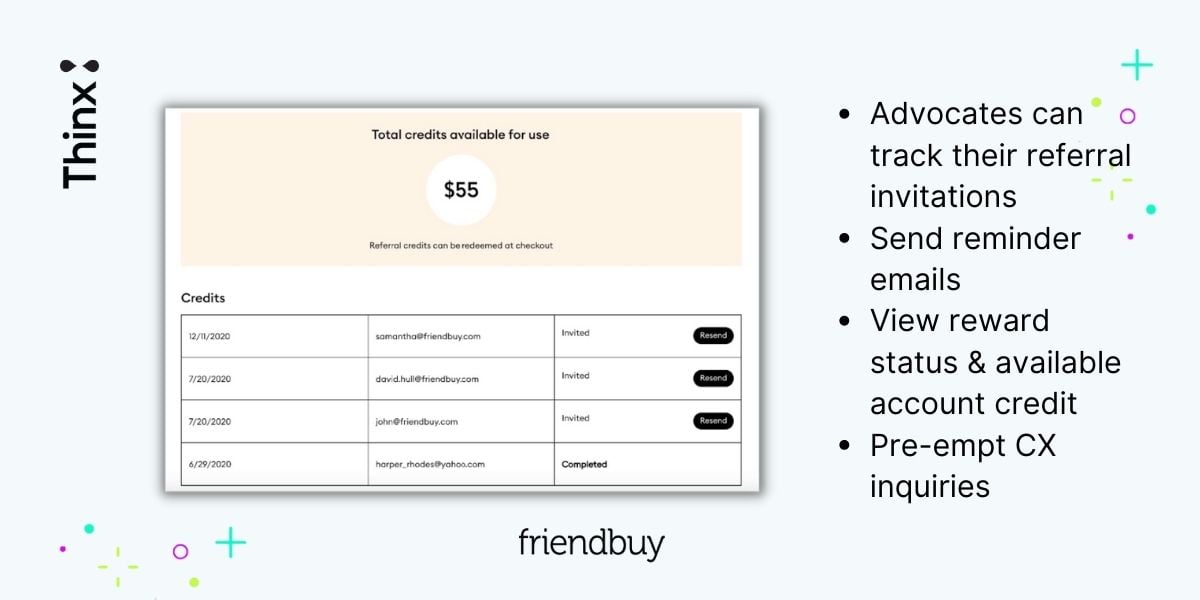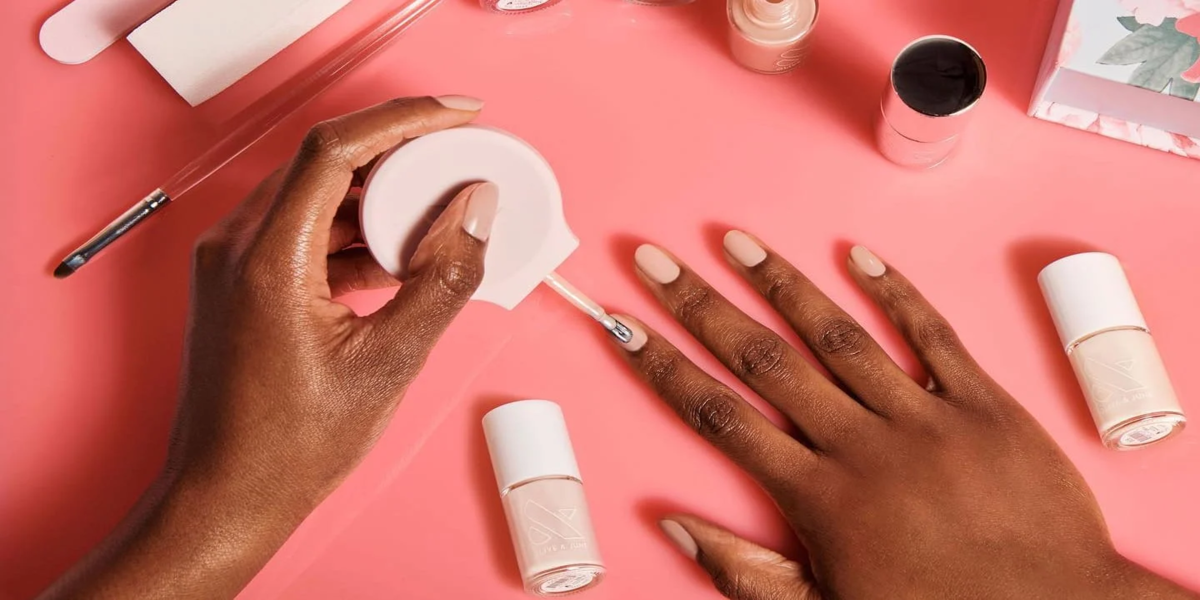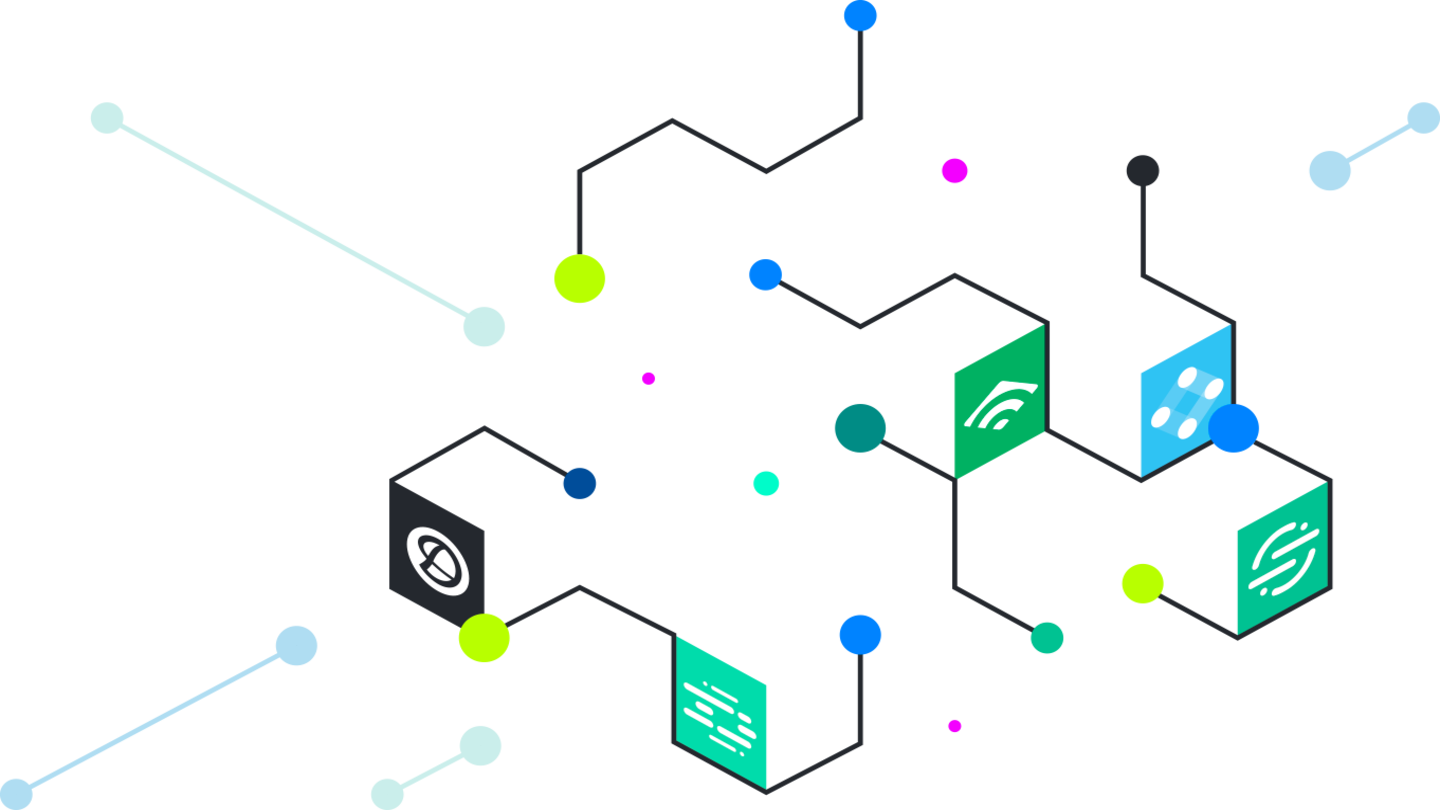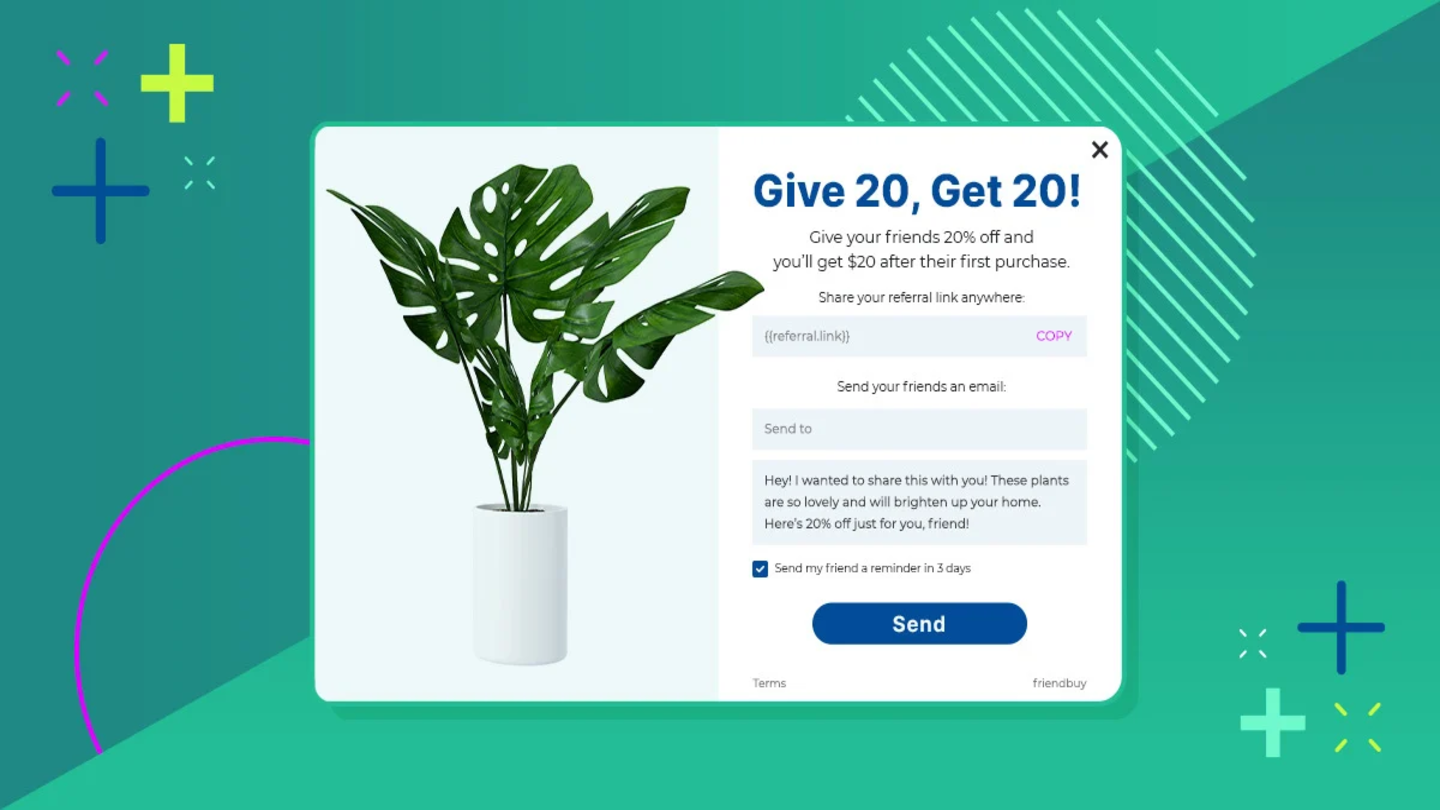Share this article
Table of Contents
These customer loyalty program ideas will help you foster the loyalty of an existing customer.
If even your most loyal customers barely know about your loyalty program — or don’t have enough reason to sign up — then you might still struggle to keep them returning to buy more. That's where these customer loyalty program ideas come into play.
Here are a few dozen ideas you can use to ensure your loyalty program gets the engagement it deserves.
When To Add A Loyalty Program To Your Business
Your customer loyalty program will create a “stickier” brand by incentivizing existing customers to remain customers.
But the question isn’t whether to add a loyalty program. It’s when to add one. Here are a few signs that you have the engaged customer base necessary to launch a program of your own:
- A good number of customers with three purchases. Some 88% of customers say they feel loyalty to a brand after about three purchases. Is it a hard and fast rule? No. But you should look at your customer base. If you have enough customers who have bought from you multiple times, you’ll know you have a foundation to work with.
- High conversion rates, but low retention. Maybe you have an established customer base, but the long-term value of your customers leaves a little bit to be desired. If you can convert web visitors into customers, but still struggle with long-term retention, a customer loyalty program might be the medicine you need.
Learn more: New to Loyalty Marketing? Start Here
Customer Loyalty Program Ideas For Small Businesses
If building long-term customer loyalty retention was as easy as announcing a new program and saying, “here it is,” this would be a short article. But your customer loyalty program needs to meet your customers’ preferences, too.
After all, customer loyalty programs are all about rewarding the customer behavior you want. And depending on your business, you might want different types of customer behavior. Here are some ideas for building different types of loyalty programs.
Points-Based Loyalty Programs
A points-based loyalty program gives customers the ability to accrue rewards over time. This has the advantage of being more affordable on your end. Rather than giving out a prize for every new purchase they make, a purchase might equal a set number of points. Enough purchases, over time, could trigger a reward.
Here are a few ideas for making this work for you:
- Points per dollar spent. The Friendbuy loyalty program features, for example, let you set “ten points per $1 spent”, or whichever amount makes sense for your business. This helps build loyalty because it gives a customer a little satisfaction even if they spend only a few dollars at a time.
- Advertise loyalty points on a product purchase page. Want to push a specific product? Have it count for more loyalty points. Or add some oomf to a product page by advertising the rewards points a customer receives from the purchase.
Tiered Loyalty Programs
Customers always love a good upgrade. That’s what tiered loyalty programs offer. Rather than giving them linear rewards ($10 spent = 10 reward points), you give them a chance to expand their rewards over time. You’ll have to be careful about just how much you give away for the highest tiers — otherwise, you face a “be careful what you wish for” situation.
Here are some best practices:
- Limit your tiered rewards. For example, Casper once ran a tiered customer referral program by limiting one tier to a $200 gift card. They still wanted to hand out an evergreen $75 gift card, however, so they created separate tiers. Be wary of setting up tiers that give your customers the potential for compounding rewards beyond what they sink into your company. Make sure to check the math on your customer incentives so that your program continues to have a high ROI.
- Show customers what they can earn with your loyalty program. Take the image below. Cora outlines exactly how much customers can earn per referral — and when the upgrades kick in. Do the same with your loyalty program to dangle a carrot in front of your customer. Let them know ahead of time what they can expect.
- Make it exciting. Unlocking a second or third tier of rewards should be exciting. So push it! Make sure customers understand that when they engage more with your loyalty program, they’ll get more out of it. A flat rate of points-per-dollar spent simply isn’t motivating enough to inspire legions of fans to become VIPs. Give them the encouragement and the incentives to land themselves on the higher tiers.
Paid Loyalty Programs
Few incentives are as motivating as cold, hard cash. A paid loyalty program is especially great if you need to inspire more customer loyalty in a young brand. As your brand builds loyalty and familiarity, you might offer other incentives. But until then, grab attention for your loyalty program by offering substantial discounts or paid rewards.
- Use introductory offers. A 2020 McKinsey study found that paid loyalty programs made customers 60% more likely to buy, compared to “free” loyalty programs and their 30% rate. Sometimes, the best way to spark loyalty is to go big right out of the gate.
- Incentivize customers to use their on-platform dashboards. When you give customers their rewards, link them to their dashboards on your site. You want them to think of your site as a “homepage” for what they do online. This doesn’t only inspire loyalty, but decreases the friction to buying more from your brand down the line — simply because they’re already on your site.
Value-Based Loyalty Programs
What inspires brand loyalty? A lot of things. But near the top of the list is a value shared between a customer and a brand. Among millennials, 83% of customers prefer to link with a brand that shares their values.
You can structure your rewards to reflect that. For example, TOMS shoes famously donated a pair of shoes to children for pairs its customers bought.
- Choose rewards that align with your customers’ values. Maybe people don’t come to your shop because they want cold, hard cash. Consider what else would be incentivizing for the kinds of customers you do want to attract. Then give it to them.
- Ask for customer feedback. This is when the back-and-forth conversation comes in handy. Ask for customer feedback on every aspect of your brand, including your loyalty program. What is motivating your customers? What is making them click on other brands? Answer those questions, and you’ll customize a loyalty program that suits your audience.
Customer Loyalty Cards
If you remember that episode of Seinfeld in which Elaine keeps returning to a sub shop with mediocre sandwiches because of her loyalty cards, you’ll know the appeal here. She didn’t even like the subs! But she kept coming back for the promise of a free one.
Hopefully, you’re not selling mediocre subs. But the appeal of the customer loyalty card is that it serves as a sort of “token” of your customer’s loyalty over time.
- Find ways to keep the customer invested. If your customer loyalty cards are digital, you can create visual references that show their progress over time. After all, which customer is really going to go to a competitor’s brand if they see 9 out of 10 boxes checked off on their customer card with you?
- Remind them about the prizes. If your customer login page says “98% of the way to a gift card,” for example, you’ll inspire action on their part. Sometimes customers need these gentle nudges to remember that they have points with you. Send them email nudges or keep an active tally on their customer page.
Loyalty Program Discounts
A good discount is incentivizing for the customer, sure. But it has an added benefit for you: it keeps the customer’s rewards in-house. This means that even when the customer is rewarded, they might use that discount toward something you’re selling. And that’s an opportunity for cross-selling, upselling, and adding to your average order value (AOV).
- Give people digestible milestones. The “ten subs for a free sub” is a great example of this. That’s less than two weeks of lunch at the same restaurant. To make your loyalty program discounts work, give people digestible milestones so they’ll be encouraged by their progress — and more likely to take action.
- Dole out store discount codes. Take the example below. No, the points aren’t cold hard cash. They’re store credit and discount codes. But do they look any less rewarding when presented as part of a customer loyalty program?
Gamified Loyalty Programs
“Gamification” refers to modeling your loyalty programs on modern-day mobile and video games. These games have made a science out of keeping people’s interest. Rewards, upgrades, “ding” notifications that add satisfaction to tiny transactions. They all add up to making your customer’s journey that much more compelling. But how do you gamify your loyalty programs?
- Small actions, small rewards. Imagine playing “Mario” without a few stars to collect along the way. It would be a drag. To inspire more action with your loyalty programs, start new customers off with small actions to create small rewards.
- Create competition. The competitive instinct is part of what drives us to stick with our journey. If we see our names climbing up a leaderboard, for example, we’re motivated every time we “win.” Even a set of first-place through third-place prizes (like in the Nature Box example below) can inspire people to take more action.
Tie Credit Cards To Rewards Accounts
Sometimes, getting a loyalty program to work is as simple as removing any friction from your rewards plan. Customers already have credit cards in their wallets. Tie your loyalty program to their credit cards, and you’ve made it simpler for them to redeem their rewards.
- Encourage customers to save credit card information when they sign up to your loyalty program. Saved credit card information makes for a faster ordering process in the future. It reduces customer friction and gets customers much closer to one-click ordering from your store.
- Give customers more options. Store credit is a nice reward. But if that’s the only reward your customers can redeem? Some might prefer something more direct. Take Sephora’s Beauty Insider rewards program, which lets customers choose how they get their rewards.
Reward Tracking On Smartphones
A customer with a rewards balance on their account is one of the warmest possible leads. It’s money that’s burning a hole in their pocket. But sometimes, customers forget about your program. They may even forget they have rewards points built up in an account.
The solution is to enable reward tracking on smartphones. If the average person checks their smartphone 96 times per day, it’s like giving your customers a subtle nudge almost every hour. Here’s what to do:
- Place your loyalty program in a prominent location in your app. Below, you’ll see an example from Thinx, which uses reminder emails and tracked referral invitations to create a simple output: “Total credits available for use.” Make sure it’s easy for customers to view their current status on your app, or even simply the mobile version of your website.
- Use push notification reminders — but sparingly. Push notifications can annoy us when they’re irrelevant or too salesy. But a push notification (via an email reminder) that reads: “You have $40 to spend — on us”? That’s a prompt that will bring your customers back.

How To Build A Customer Loyalty Program
Launching a new loyalty program isn’t as simple as setting up rewards, setting up the loyalty program software, and crossing your fingers that customers will respond. To reap the benefits of a loyalty program, you have to build your loyalty program in a way that draws in customers. We recommend the following loyalty program best practices:
Choose Unique Earning Events
Your first step is to nudge customers over the starting line. We recommend using “unique earning events.” These events can be triggers for inspiring someone to sign up to your loyalty program, based on an action they’ve taken on your store. For example:
- Signing up for SMS marketing
- Purchasing a specific product, or from a specific category
- Downloading your mobile app
These actions usually require granting you permission to contact them. So use it! Prompt your customers with an invitation to join your loyalty program — and make sure you tell them what kinds of rewards they’re leaving on the table if they don’t sign up.
Set Up Easy-to-Use Points and Rewards Redemption
Remember that note about reducing customer friction? Seek out a platform that makes points easy to redeem. If a customer builds up $100 worth of discounts with your store, but finds them impossible to use, you’ve probably lost their loyalty. But if they can find one easy button for converting discounts into purchases, they’ll keep coming back.
Create Personalized Member Dashboards
Did you know 87% of customers are open to letting you track activity if they get more personalized rewards? That’s the power of customizing your rewards program to their needs. Friendbuy’s platform helps you build customized dashboards so customers can track their loyalty rewards balance, reward activities, and recent loyalty events they’ve completed.
Integrate Loyalty Into Your Customer Journeys
Don’t simply set up a loyalty program and wait for customers to find it. Actively integrate it into milestones along your typical customer journey.
For example, Friendbuy and Segment partner up to integrate a loyalty program push into events like app downloads or in-store purchases. You can further optimize these sign-in pathways by using Segment to examine your customer data. Find out where customers are most amenable to your loyalty program, then send them the prompt.
Set Your Business Rules
Every good program has rules. Your customer loyalty program will be no different. After all, you want to inspire customer loyalty — not inspire customers gaming your system. Here are some examples of rules you can set with Friendbuy:
- New customer validation / security rules
- Minimum purchase thresholds
- Caps on rewards
- Customer authentication and logins required
Provide Multiple Opportunities For Customers To Enroll
Do you know that old saying “all roads lead to Rome”? You should try to get your customer loyalty program to work a little bit like that. Don’t isolate it to one small sign-up button, hidden away on a post-purchase page. Keep experimenting with multiple touchpoints. That way, you’ll see which ones generate the most engagement.
Instead, sell the customer loyalty program at multiple interaction points. For example, 46% of Walmart’s referral revenue comes from a CTA placement on mobile web:
Make Data-Driven Loyalty Decisions
Let’s be honest. Your customer loyalty program probably isn’t going to be 100% perfect right away. But that’s okay. As long as you use dashboards like Friendbuy’s 24/7, easy-access dashboards, you’ll view whether you’re on track or not. You can also isolate key variables like revenue-per-member to see where you might need to spruce up your offerings.
Best Customer Loyalty Program Examples
Want a shortcut to building a successful customer loyalty program? Look at what’s worked for some of the top brands.
- Sephora: the art of turning loyalty into luxury. Sephora’s famous “Beauty Insider Loyalty Program” knows that its products can be expensive. And it doesn’t fight that fact. Instead, they use a tiered loyalty approach to inspire customers to take short-term action with an eye on long-term rewards. For example, $350 spent in one year grants “VIB” (very important beauty) status to customers, while $1,000 spent in a year grants “Rouge” status. This gamification-style approach to luxury beauty products grants rewards access at multiple levels. This ensures no customer feels left out.
- Starbucks: personalization at scale. We’re all familiar with the loyalty punch-card you might get from a local business. Buy 10, get one free. The challenge for Starbucks is to take a scaled business and make a similar loyalty program feel personal. So Starbucks’ unique rewards include special birthday treats for customers, choose-your-own-freebies, and “Bonus Star” challenges for leveling up. The result: every customer’s loyalty experience is a unique one.
- Delta Airlines: integrating credit cards. There’s a lot to like about SkyMiles: miles that never expire, thousands of potential destinations. But Delta builds customer loyalty with a powerful incentive: linking your credit card use to the airline you fly. They offer tens of thousands of points just for signing up for a Delta credit card — and once you’re signed up, you earn Delta miles. It’s a powerful incentive for staying queued in the Delta “system.”
What do these customer loyalty program examples have in common? They get creative with incentives. They don’t expect brand recognition alone to draw in customers. They go out and get those customers by giving customers reasons for signing up, staying in, and feeling like VIPs.
Tips for Building Customer Loyalty
Use a platform like Friendbuy and you’ll be off to the races with a great customer loyalty program. But it doesn’t mean you can set it and forget it. Incorporate the following tips to incentivize customers to keep coming back:
- Provide Exceptional Customer Service. You can offer all the incentives you want. Ultimately, you earn customer loyalty with how you treat your customers. Invest in exceptional customer service to ensure low customer churn from your loyalty programs, increasing the lifetime value of each customer you convert.
- Share Positive Customer Experiences. Don’t expect customers to discover how great your loyalty program is. Show them! Post positive customer experiences to your blog, your social media platforms, and even your post-purchase pages.
- Reward A Variety Of Customer Actions. Don’t expect customers to be thrilled with a straight “$1 spent = 1 point earned” arrangement. Like Starbucks and Sephora, give them different tiers, different rewards, and different experiences to maintain their interest.
- Offer Unexpected Rewards. Starbucks’ different “freebies” are a great idea, and not just because people like freebies. Starbucks is a frequent destination in its customers’ routines. Different rewards mix things up for customers who are used to offering them their business, prompting greater engagement from people who might otherwise buy just a coffee every morning.
There you have it! Contact our sales team to learn how to set up a Customer Loyalty Program for your business.
Ready to get more out of every customer with Loyalty?







